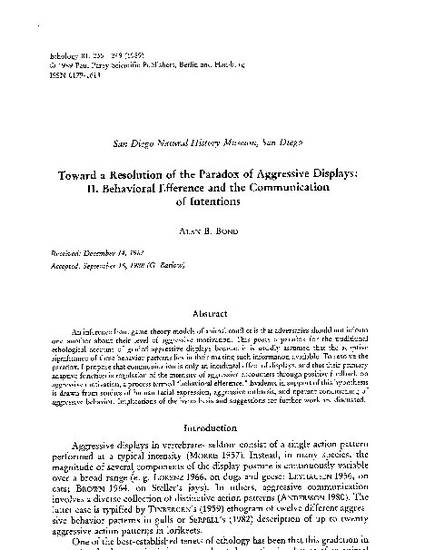
An inference from game-theory models of animal conflict is that adversaries should not inform one another about their level of aggressive motivation. This poses a paradox for the traditional ethological account of graded aggressive displays because it is usually assumed that the adaptive significance of these behavior patterns lies in their making such information available. To resolve the paradox, I propose that communication is only an incidental effect of displays, and that their primary adaptive function is regulation of the intensity of aggressive encounters through positive feedback on aggressive motivation, a process termed "behavioral efference." Evidence in support of this hypothesis is drawn from studies of human facial expression, aggressive catharsis, and operant conditioning of aggressive behavior. Implications of the hypothesis and suggestions for further work are discussed.
Available at: http://works.bepress.com/alan_bond/4/